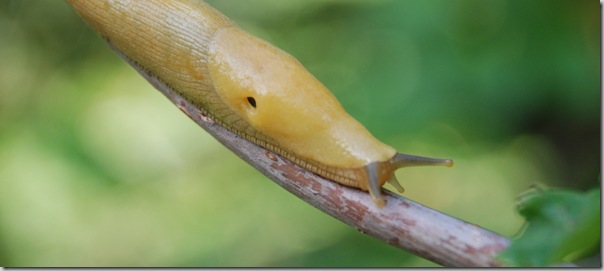Fall is a great time of year to be thinking about the wildlife. If you can hold off deadheading, leave some fall leaves on the ground for overwintering insects, and make any fall-planting choices good for wildlife, you will have really amped things up for your local butterflies, birds, and other creatures. Here’s some reading to get you going.
Best California Native Plants

This week I absolutely adored a series of posts over at Town Mouse and Country Mouse’s blog about the best California natives to plant for wildlife and why.
Here’s part one, part two, and the list for chaparral gardens.
Peter Haggard recently weighed in on this for folks in far Northern California with his Ten Best Native Plants for Coastal Northern California.
The thing I love about all of these lists is the authors describe which attributes the plants are actually good for, so I can mix and match natives to provide the widest array of help for wildlife.

Habitat Gardening – Neat VS Natural
Then, Debbie over at Garden of Possibilities asked a simple question about habitat gardening – what do you see? Is it deadheads and yuck, or a source of food for birds?
This is something I’ve been struggling with this year, as I really don’t care for an untidy-feeling garden (too many years in the maintenance field!) yet – I DO care for birds, bugs and wildlife! Go on over and have your say in Debbie’s comments.
Rosehips in the Garden
Then, Kathy Green over at Wildlife Gardening talks about rosehips in the garden. I’ve always known it was a good idea to let your roses form hips at the end of the season to encourage them to go into dormancy gracefully, but it’s lovely to also hear that they’re nutritious and helpful to wildlife as well.
Do you have any tips on gardening for wildlife? Share them in the comments below.
10 responses to “Monday Miscellany: Wildlife Gardening”
Hi Genevieve, thanks so much for the mention of my Rose Hips Post! I’m so glad to see your post on Wildlife Gardening, as we started the Wildlife Gardening website at http://www.beautifulwildlifegarden.com just for gardeners like you and others who want to make their gardens more than just a pretty place to be. I’ll be sure to check out the links above to see what they suggest.
P.S. I love your blog header – it’s beautiful.
Thanks so much, Kathy! I love your new Wildlife Gardening site, and it’s been such an inspiration to see such a diverse set of takes on the topic. Thanks for saying hello!
Genevieve, thanks so much for the shout-out for the Beautiful Wildlife Garden site with Kathy Green’s post about Rose Hips. It’s so much fun to bring this team together and to see their amazing wildlife gardens from around the country.
Thank YOU for getting that group blog rolling. I have learned so much from it, and have really enjoyed seeing the conversations feathering out around the web that originated at Beautiful Wildlife Gardens.
That banana slug is making me shudder. Still! I hate HATE slugs.
LOL, Susan. You’d hate my local chocolate company, then. They make a white chocolate (actually a yellow chocolate) banana slug!! He’s quite tasty, too.
I give banana slugs a pass on my slug hatred. They do burn through a Dahlia fairly quickly, though.
Hi Gen, Thanks for mentioning my post about wildlife gardening. I’m posting another photo this week so I hope you’ll stop by again and check it out.
I understand your pull between tidy vs. wildlife benefit when it comes to fall clean-up. I admit to giving into the urge to making my garden tidy before the winter sets in sometimes, too. I try and strike a balance that works for me and the wildlfie in my garden – the longer I live with my garden the more I come to understand which plants, if left untidy over the winter, will be a big headache to clean up in the spring.
Debbie, I love your photos. I think since you’ve been a designer so long you probably have a lot of material to worth with photographically!
My tendency is always towards tidy, even if that is not what I achieve. I also tend to bite off more than I can chew in the defined period. And, once I get to clearing something out, I often find it leads to another job that just HAS to get done right then. And the work snowballs.
That is one of the things I love about gardening – learning about oneself in the process!
Susan, me too!! But the more I read about how important native bugs are to our ecosystem, and how they overwinter in fallen leaves – or how birds eat the seeds from our perennials and grasses in winter if we don’t deadhead – well, suffice it to say I’ve been struggling to not be so tidy, at least in my home garden! I guess everything in life is a balancing act – and you’re so right – a learning process!!